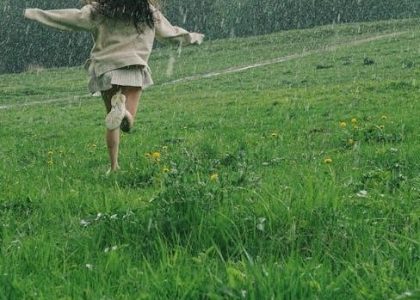Knitting Patterns for Beginners⁚ A Comprehensive Guide
This guide offers a curated selection of free PDF knitting patterns perfect for novices. Discover easy projects like scarves and hats, master basic stitches, and explore simple toys. Learn decreases and shaping techniques, find helpful resources, and choose the right yarn and needles. Progress to more advanced beginner projects with confidence and support.
Finding Free PDF Knitting Patterns
The internet is a treasure trove of free knitting patterns! Numerous websites and blogs offer downloadable PDF patterns specifically designed for beginners. Sites like Ravelry, LoveCrafts, and many individual designers’ blogs provide a vast library of patterns, ranging from simple scarves and hats to more intricate projects. Look for patterns clearly labeled as “beginner-friendly” or those using only basic stitches like knit and purl. Many patterns include helpful diagrams and detailed instructions, making them easy to follow even for complete novices. Pay close attention to the yarn weight and needle size recommendations to ensure a successful project. Don’t hesitate to explore different websites; each offers a unique collection of patterns and styles. Remember to check the comments section for user reviews and tips!
Easy Knitting Projects for Beginners⁚ Scarves and Hats
Scarves and hats are classic beginner projects, perfect for building confidence and practicing basic knitting skills. Many free PDF patterns offer simple garter stitch or basic rib stitch scarves, requiring only knit and purl stitches. These patterns are ideal for learning to cast on, knit, purl, and bind off – fundamental techniques for any knitter. For hats, look for patterns using simple shaping techniques, such as decreasing stitches at the crown to create a snug fit. Choose chunky yarns and larger needles to make the process faster and easier. The satisfying results of a finished scarf or hat provide a great sense of accomplishment, motivating beginners to tackle more complex projects. Remember to select patterns with clear instructions and helpful diagrams to guide you through each step. Enjoy the process of creating warm, cozy accessories!
Mastering Basic Knitting Stitches⁚ Knit and Purl
The foundation of knitting lies in mastering the knit and purl stitches. Numerous free PDF patterns online provide detailed instructions and visuals to guide beginners. The knit stitch, creating vertical ridges, is typically the first stitch learned. The purl stitch, forming horizontal ridges, adds texture and is essential for many patterns. Practice each stitch individually until comfortable creating even rows without tension inconsistencies. Many beginner-friendly patterns utilize only these two stitches, allowing you to focus on technique rather than complex stitch combinations. Consider practicing with a chunky yarn and large needles to make the stitches easier to see and manipulate. Online video tutorials can offer additional visual guidance, complementing written instructions. Once comfortable with both stitches, you can experiment with simple stitch combinations to create textured fabrics, preparing you for more advanced patterns.
Simple Knitting Patterns for Toys and Amigurumi
Embark on a fun and fulfilling journey into the world of knitted toys and amigurumi! Many free PDF patterns cater to beginners, offering simple designs that build confidence. Start with basic shapes like spheres or cylinders, perfect for creating adorable animals or whimsical characters. These projects often utilize easy-to-learn stitches, focusing on increasing and decreasing to shape the toy’s form. The internet is a treasure trove of free amigurumi patterns, ranging from tiny creatures to larger, more complex designs. Choose a pattern with clear instructions and diagrams. Working with smaller needles and lightweight yarn allows for precise shaping and detailed features. Remember that stuffing is crucial for achieving the desired plumpness and form of your knitted toy. Don’t be afraid to experiment with different yarns and colors to create unique and personalized creations. Once you master a few basic toys, you’ll be ready to tackle more challenging amigurumi projects, unleashing your creativity.
Once you’ve mastered the knit and purl stitches, it’s time to explore decreases and shaping—essential techniques for creating garments and projects with defined forms. Decreases reduce the number of stitches, creating curves, points, and necklines. Common decrease methods include k2tog (knit two stitches together) and ssk (slip, slip, knit). These techniques are crucial for shaping sleeves, collars, and other garment features. Many free PDF patterns for beginners incorporate simple decreases, gradually introducing you to these skills. Start with projects like hats or simple shawls that use decreases in a straightforward manner. Understanding how decreases work is key to understanding shaping. Shaping involves strategically increasing or decreasing stitches to create specific shapes. These techniques are crucial for creating garments and toys with defined forms. Practice these techniques on small swatches before tackling larger projects. Online tutorials and videos are invaluable resources to visualize and understand the mechanics of decreases and shaping. With practice, these techniques become second nature, allowing you to knit more complex and interesting projects.
Knitting Pattern Resources⁚ Websites and Blogs
The internet is a treasure trove of free knitting patterns for beginners, available as convenient PDF downloads. Numerous websites and blogs offer a wide variety of patterns, catering to all skill levels. Ravelry, a popular online community for knitters and crocheters, boasts a vast library of free patterns, user reviews, and discussions. LoveCrafts is another excellent resource, providing a user-friendly interface and a substantial collection of free patterns. Many individual knitting bloggers share their original designs and patterns for free, often focusing on specific styles or techniques. These blogs often feature detailed tutorials and helpful tips for beginners. YouTube also offers a wealth of video tutorials demonstrating knitting techniques and pattern instructions. Searching for “beginner knitting patterns PDF” or “easy knitting projects for beginners” will yield numerous results. Remember to always check the pattern’s difficulty level and required materials before starting a project. Exploring different websites and blogs allows you to discover new designers, styles, and project ideas. Don’t be afraid to experiment and find the resources that best suit your learning style and preferences.
Choosing the Right Yarn and Needles for Beginners
Selecting appropriate yarn and needles is crucial for a positive initial knitting experience. Beginners should opt for smooth, medium-weight yarns like worsted weight, which are easy to handle and see. Avoid overly fuzzy or textured yarns that can obscure stitches and make it harder to learn. Acrylic yarns are a budget-friendly and readily available choice, offering a good balance of softness and durability. Natural fibers like cotton or wool can also be suitable, but their properties might differ (wool can be more delicate). When it comes to needles, size matters. Larger needles (US size 8-11) create looser stitches, which are easier to manipulate for beginners. Aluminum or bamboo needles are popular options, providing a smooth surface and good stitch definition. Avoid excessively shiny metal needles that can reflect light and make it harder to see your stitches. Start with a single pair of needles to master basic techniques before branching out into circular needles, double-pointed needles, etc. Many beginner patterns will suggest specific yarn weights and needle sizes. Follow these recommendations to ensure a successful project. Remember, the right yarn and needles contribute significantly to a relaxed and enjoyable learning process.
Understanding Knitting Pattern Terminology and Abbreviations
Knitting patterns utilize a unique vocabulary and numerous abbreviations. Familiarizing yourself with these is essential to successfully following instructions. Common abbreviations include “k” for knit, “p” for purl, “st” for stitch, and “rep” for repeat. Understanding terms like “cast on” (starting the stitches), “cast off” (finishing the stitches), “row” (a horizontal line of stitches), and “round” (a complete circle of stitches) is crucial. Patterns often use numbers to indicate the number of stitches or rows. For instance, “k2, p2” means knit two stitches, then purl two stitches, repeating this sequence across the row. “Inc” signifies an increase (adding a stitch), while “dec” indicates a decrease (removing a stitch). Gauge, referring to the number of stitches and rows per inch, is important for ensuring your finished project matches the pattern’s dimensions. Many patterns include a legend explaining their abbreviations at the beginning. Don’t hesitate to consult online resources or knitting dictionaries for clarification if needed. Grasping these fundamentals will greatly enhance your ability to interpret and execute knitting patterns efficiently.
Free PDF Knitting Pattern Collections⁚ Websites and Blogs
The internet is a treasure trove of free PDF knitting patterns for beginners. Numerous websites and blogs offer a wide variety of patterns, catering to all skill levels and interests. Ravelry, a popular online community for knitters and crocheters, boasts an extensive library of free patterns, searchable by skill level, project type, and yarn weight. LoveCrafts is another excellent resource, providing a large selection of beginner-friendly patterns with clear instructions and accompanying images. Many individual knitting blogs also share free patterns, often showcasing unique designs and techniques. Websites like Etsy, while primarily a marketplace, also feature independent designers offering free patterns alongside their paid creations. When searching online, remember to specify “free PDF knitting patterns for beginners” to refine your search results. Always check the pattern’s rating and reviews before downloading, ensuring clarity and accuracy of instructions. Remember to always respect the designer’s copyright and terms of use, particularly if you intend to sell items made using their pattern.
Advanced Beginner Projects⁚ Simple Garments
Once you’ve mastered basic stitches and simple projects, it’s time to tackle more ambitious endeavors! Simple garments are the perfect next step for beginner knitters looking to expand their skills. Look for patterns that utilize straightforward techniques, like stockinette stitch and garter stitch, with minimal shaping or complex stitch patterns. A lightweight cardigan is an excellent choice; many free patterns exist that use primarily knit and purl stitches, gradually introducing decreases and shaping for a flattering fit. Similarly, simple sweaters with raglan sleeves offer a manageable challenge, teaching you to work in the round and incorporate increases or decreases for sleeve shaping. Consider a basic vest, a versatile piece that requires less shaping than a full sweater, yet still allows for creativity in color and texture. Remember to carefully read the pattern instructions and choose a yarn weight and needle size that are comfortable for your skill level. Don’t be afraid to adjust the size or modify elements to personalize the garment. Celebrate your achievement of creating a wearable item you knit yourself!
Tips and Tricks for Successful Knitting Projects
Even with the simplest patterns, a few helpful hints can significantly improve your knitting experience. Always check your gauge before starting a project. This ensures your finished piece matches the pattern’s dimensions. Use stitch markers to help you keep track of increases, decreases, and pattern repeats; this prevents errors and frustration. Knitting tension is key; strive for consistent tightness to avoid uneven fabric. Read the pattern thoroughly before beginning, understanding all abbreviations and techniques. Don’t be afraid to ask for help! Online knitting communities and forums offer abundant support and advice. If you encounter difficulties, don’t hesitate to unravel a section and start again—it’s a valuable learning experience. Consider using a project notebook to record notes, stitch counts, and modifications made. Enjoy the process! Knitting is a relaxing and rewarding craft; embrace the journey of learning and creating. Celebrate your completed projects, no matter how small; each one represents a step forward in your knitting journey.




